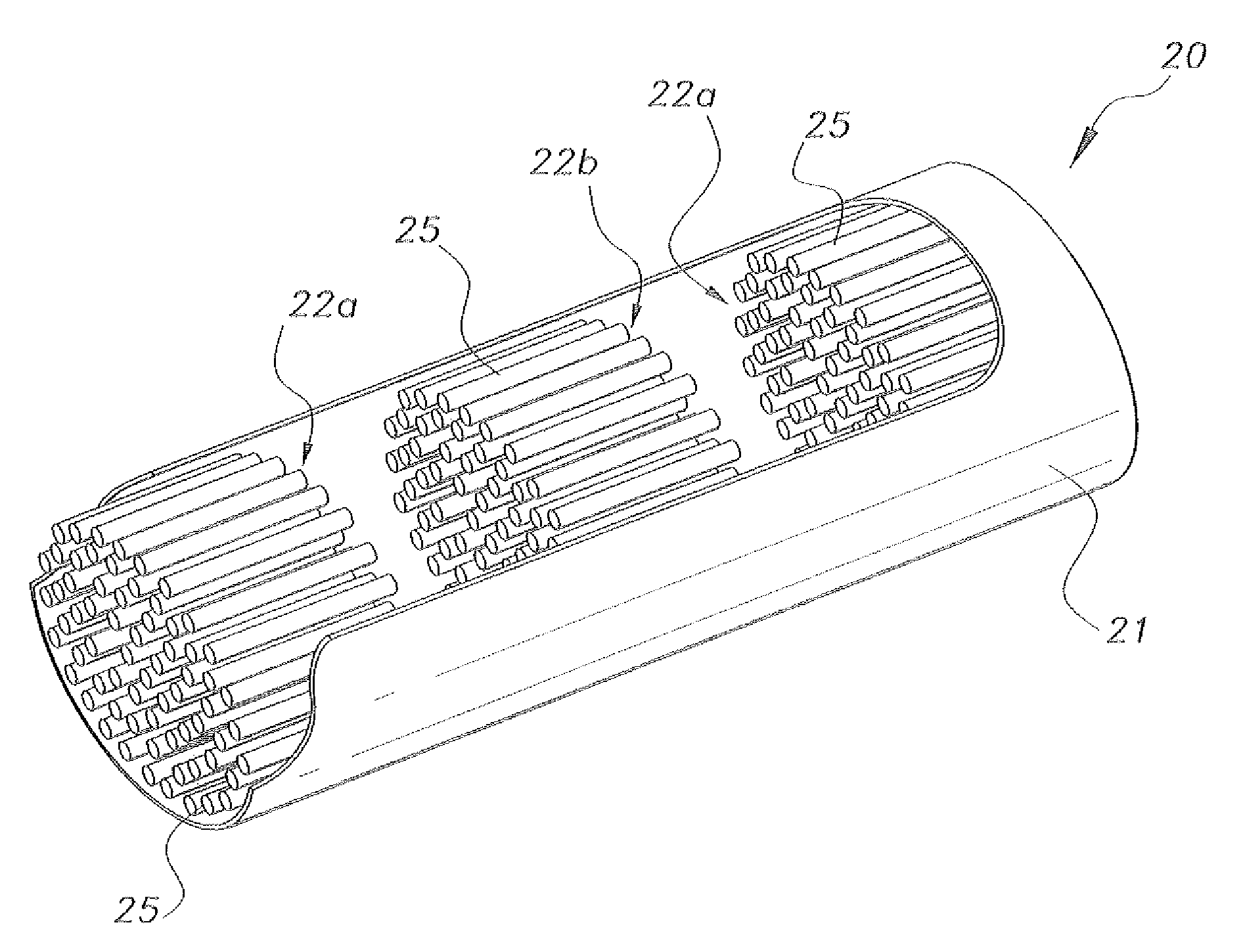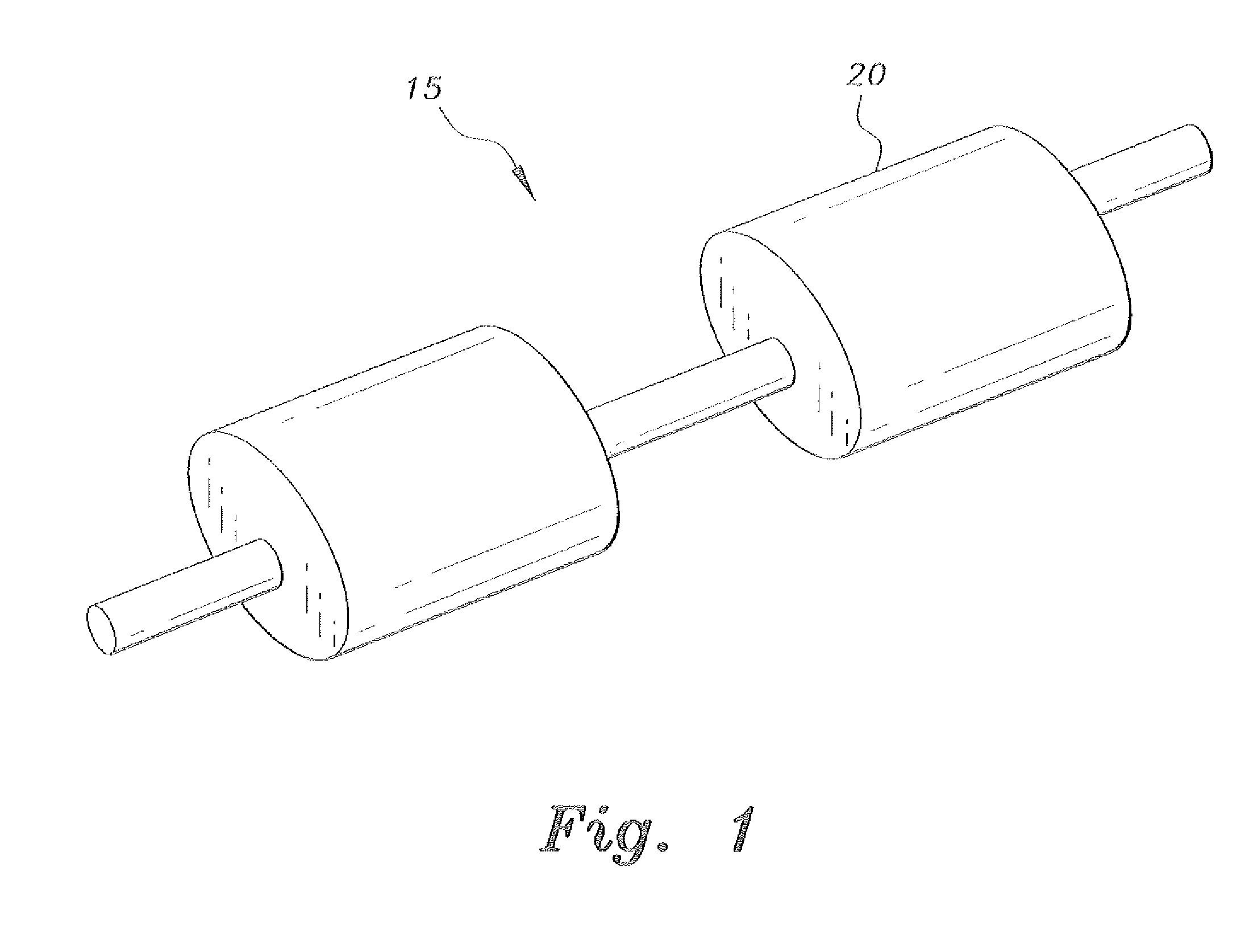Vehicle electrocatalyzer for recycling carbon dioxide to fuel hydrocarbons
a technology of electrocatalyzer and fuel hydrocarbon, which is applied in the direction of fuel cell, non-fuel substance addition to fuel, exhaust treatment, etc., can solve the problems of insufficient treatment of two aforementioned concerns and failure of devices to deal with carbon dioxide, so as to reduce the greenhouse effect and reduce the total fuel consumption of the vehicle
- Summary
- Abstract
- Description
- Claims
- Application Information
AI Technical Summary
Benefits of technology
Problems solved by technology
Method used
Image
Examples
Embodiment Construction
[0013]As shown in FIGS. 1-3, an exemplary vehicle electrocatalyzer 20 has a hollow outer shell 21 that houses a plurality of multistage, electrically conducting inner tubular electrocatalytic cell modules 22a (positive) and 22b (negative) connected in series and spaced at intervals in an alternating manner inside and along an axial center of the outer shell 21. The tubular modules 22a and 22b function as electrodes and are suspended in the outer shell 21 by a fluid disposed inside the outer shell 21. Each module 22a, 22b has a length of approximately 5-10 cm, and is then followed by an isolator from the other modules that are connected to the previous ones in series. Each inner tube 25 of the inner tubular modules 22a, 22b is coated with thin, elongate fin-like members 30 composed of nanoparticles. These cells will accommodate the catalyst like metallic copper, iron, carbonaceous material (such as activated carbon, carbon nanomaterial, or graphite), metal oxides, or metal-supported ...
PUM
 Login to View More
Login to View More Abstract
Description
Claims
Application Information
 Login to View More
Login to View More - R&D
- Intellectual Property
- Life Sciences
- Materials
- Tech Scout
- Unparalleled Data Quality
- Higher Quality Content
- 60% Fewer Hallucinations
Browse by: Latest US Patents, China's latest patents, Technical Efficacy Thesaurus, Application Domain, Technology Topic, Popular Technical Reports.
© 2025 PatSnap. All rights reserved.Legal|Privacy policy|Modern Slavery Act Transparency Statement|Sitemap|About US| Contact US: help@patsnap.com



